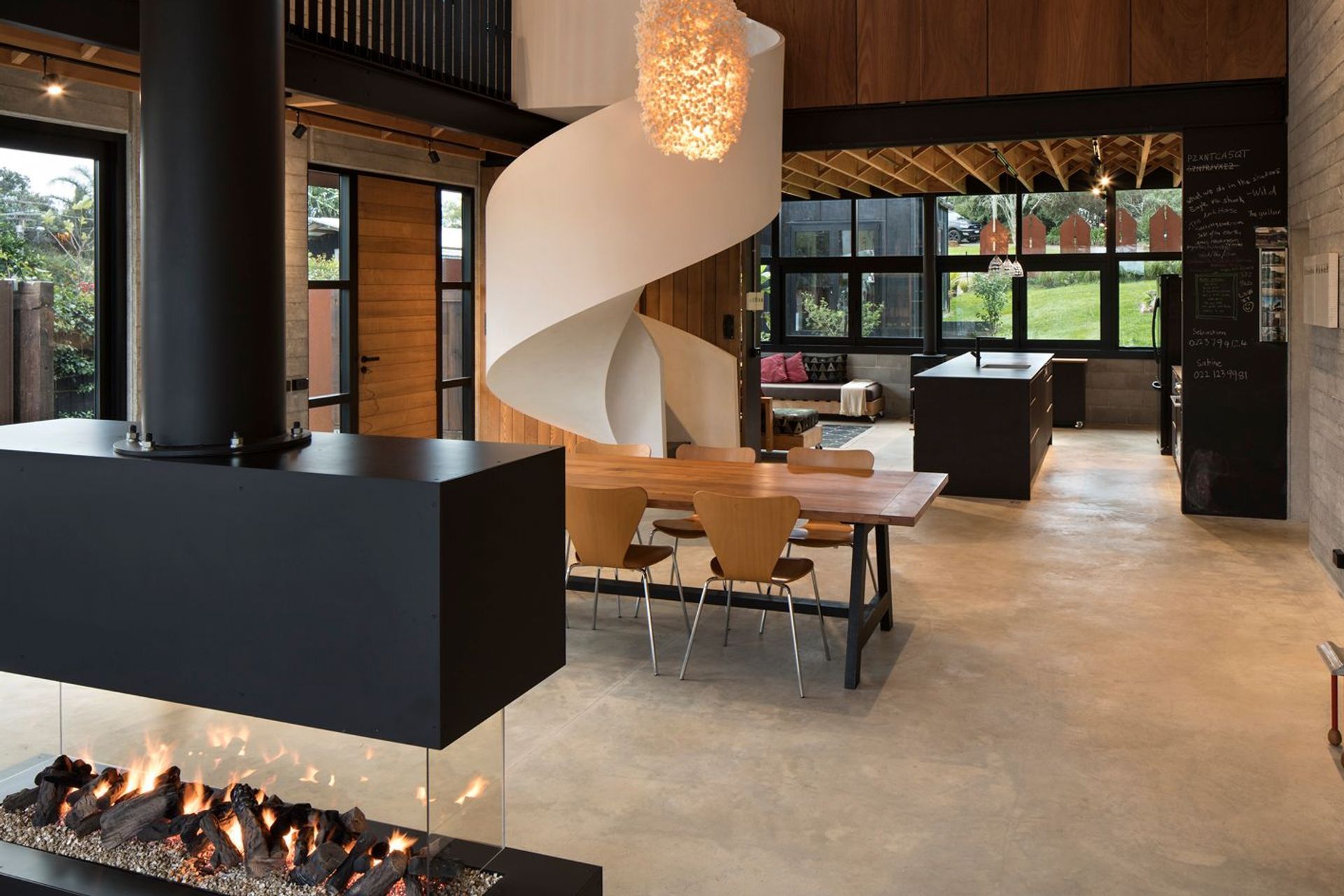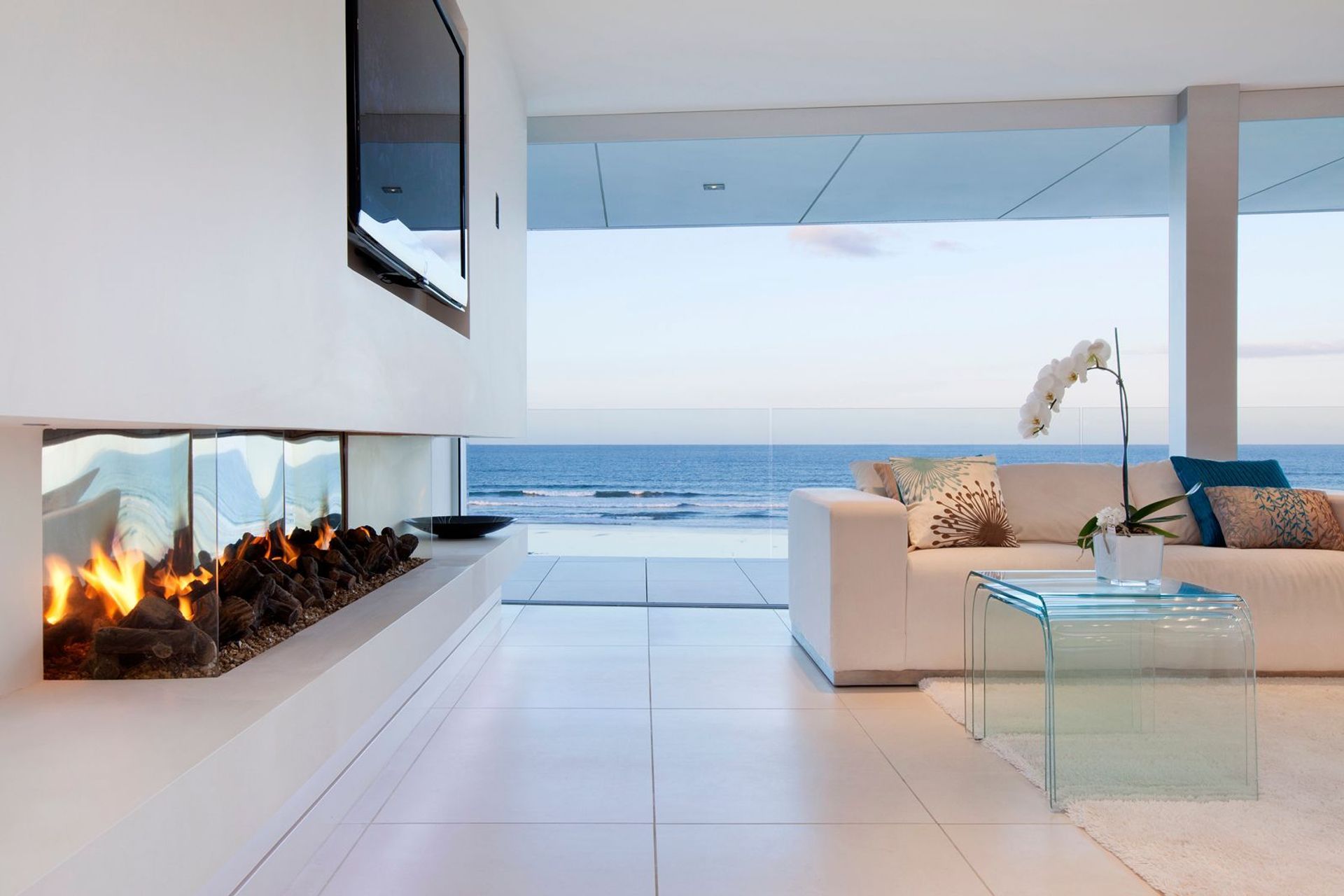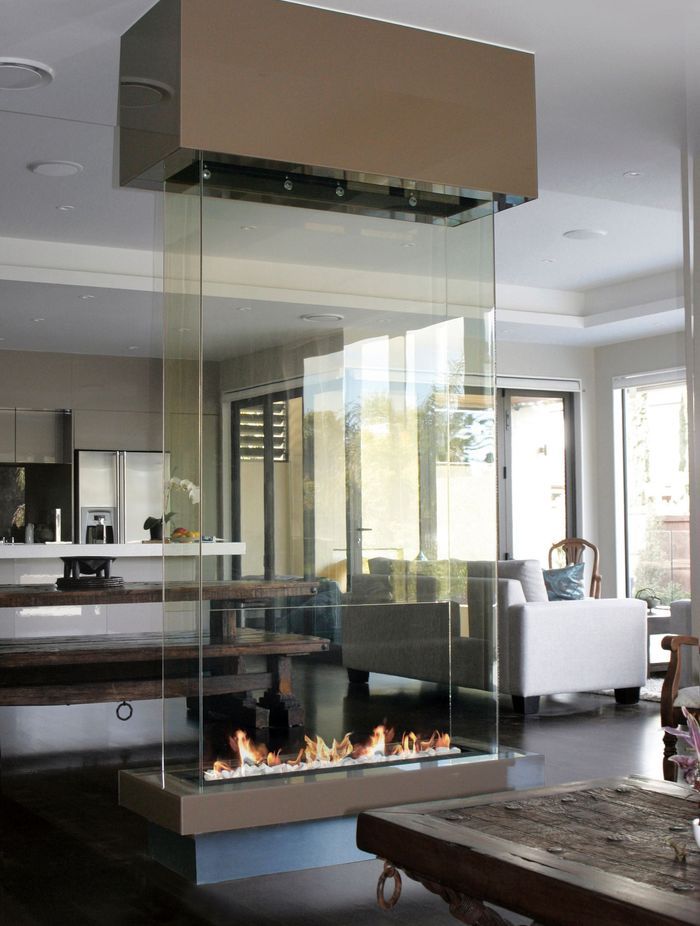Open fronted versus glass fronted fireplaces

With any modern fireplace there are many options when it comes to the appearance and finish of the fire and ways of producing and spreading the heat throughout the home. The debate of the open fronted fire vs glass fronted is ongoing, but both fireplace types have benefits and flaws. We have some good knowledge to share so you can make an informed choice between the two.
1. An often debated topic is the “efficiency of a glass fronted fire vs the lack of efficiency from an open fronted fire”. In some ways this is true; the combustion process inside a glass fronted fire is more controlled and can allow the fireplace to burn more of the gas before it escapes from the chimney, but the glass front will reduce the amount of radiant heat a fireplace can produce. The glass front acts as a barrier to the type of heat that makes you feel warm when you stand in front of a fireplace. The reality is, any yellow flame that is created has a level of inefficiency to it (the blue flame on a gas hob is 99% efficient but it’s not something you’d want to look at in a fireplace). At some point, you must trade efficiency for appearance in order to create a beautiful, realistic fireplace.
2. “A glass fronted fireplace puts out more heat”, this is simply not true as the balance of heat is different and hard to compare. With the glass acting as a barrier to the radiant heat, a glass fronted fireplace will generally create more heat inside the fire, which is pushed into the home using natural convection (heat rising) or fan assistance. Some open fires are purely radiant heaters, others have a mix of radiant heat and convection. A glass fronted fireplace can often do a better job of warming the thermal temperature of the room slowly, while an open fire will feel warmer when you turn it on and are standing in front of it.
3. “An open fireplace will smell of gas”, this is completely untrue; if any appliance smells of gas there is a problem and you should immediately contact a gas fitter. When installed, the fireplace is checked to make sure the flue takes the products of combustion from the home - if this does not happen, the fireplace is dangerous to use. This applies to both glass fronted and open fronted fireplaces. All fireplaces will have an initial smell when used for the first few times, this is simply the paints, seals and other products used, settling down with the heat. We recommend that any new fireplace is run for 3-4 hours on full with the windows open to allow any of these smells to escape.
4. “A heat transfer vented system will heat my home”, not true. In some instances, a heat transfer is a great way of spreading the heat further, however the further you want to push the heat, the more it cools along the way, meaning the air coming from the vent may end up being cold. Fan forcing the heat increases the speed the hot air travels, at the same time as cooling it faster. Often the best option is to take the heat from the fire directly into the room above, as hot air is rising and not traveling too far. Many fireplaces offer a vented system with the fireplace, including at Living Flame, but be careful with your expectations on what is achievable.
Many people are either on one side or the other when it comes to this debate, but both styles of fireplace do have a place and a use in the home. As a consumer, it’s up to you to decide which is the right look for your home. My personal preference is the most realistic fireplace that suits my needs - at the end of the day it’s what looks best.



